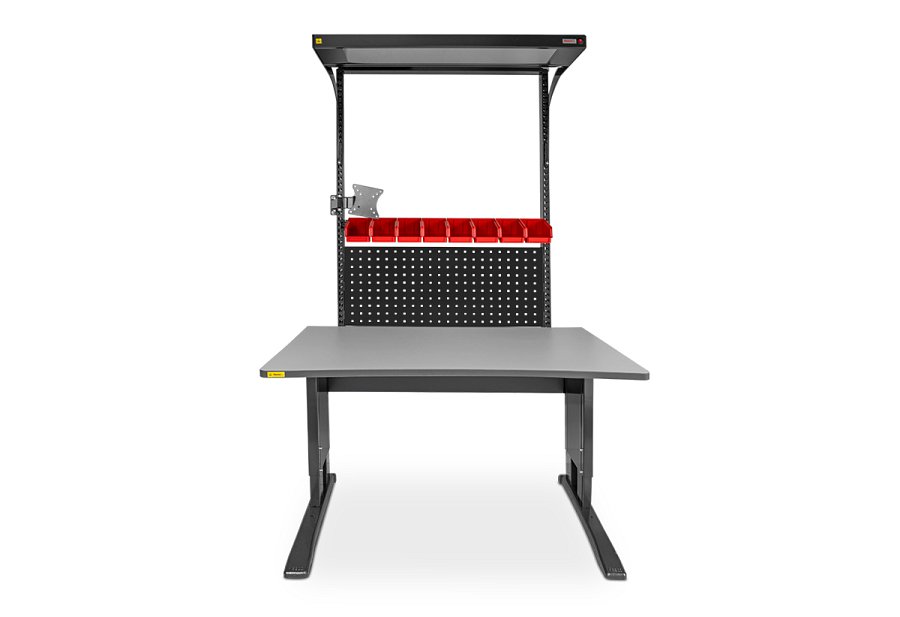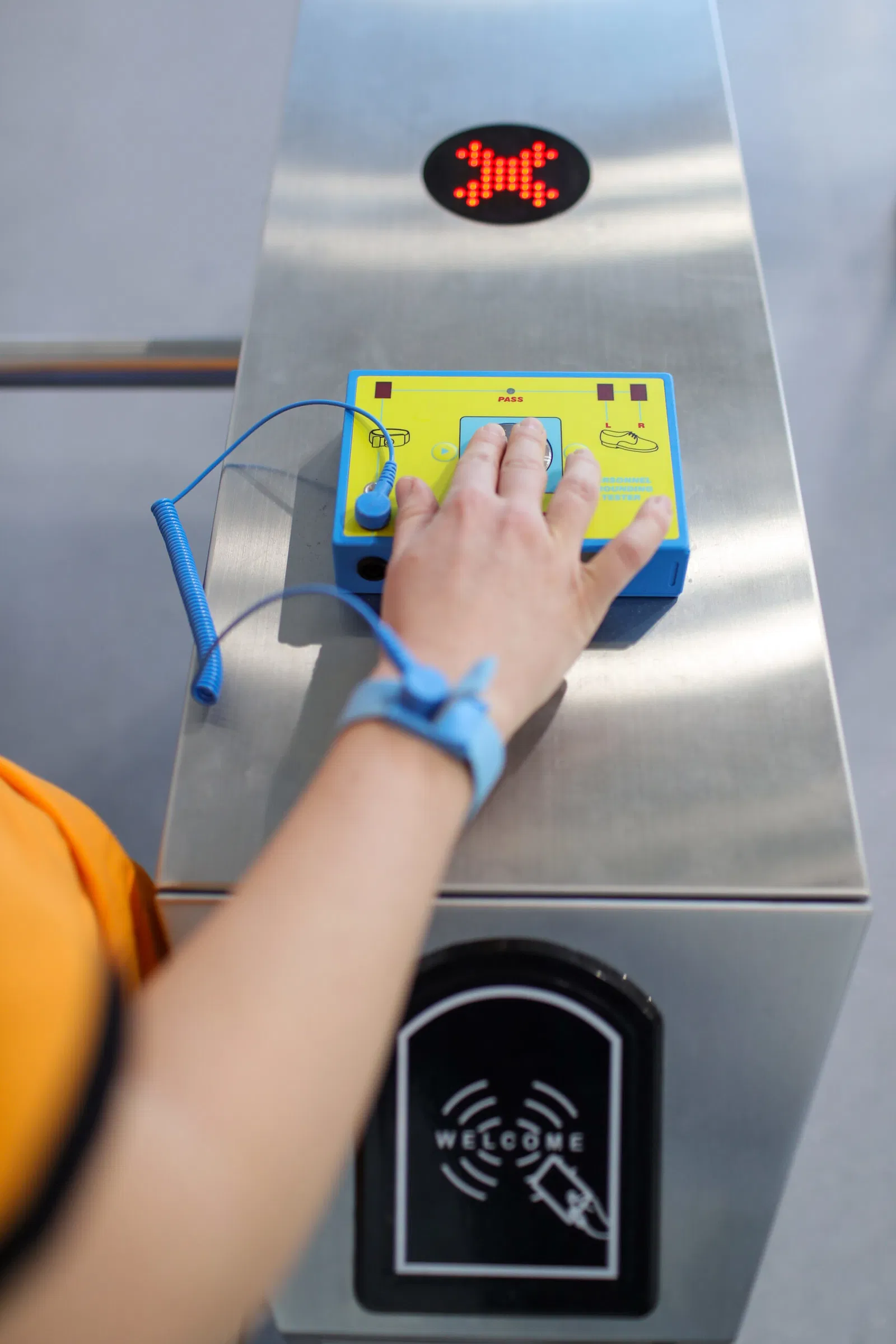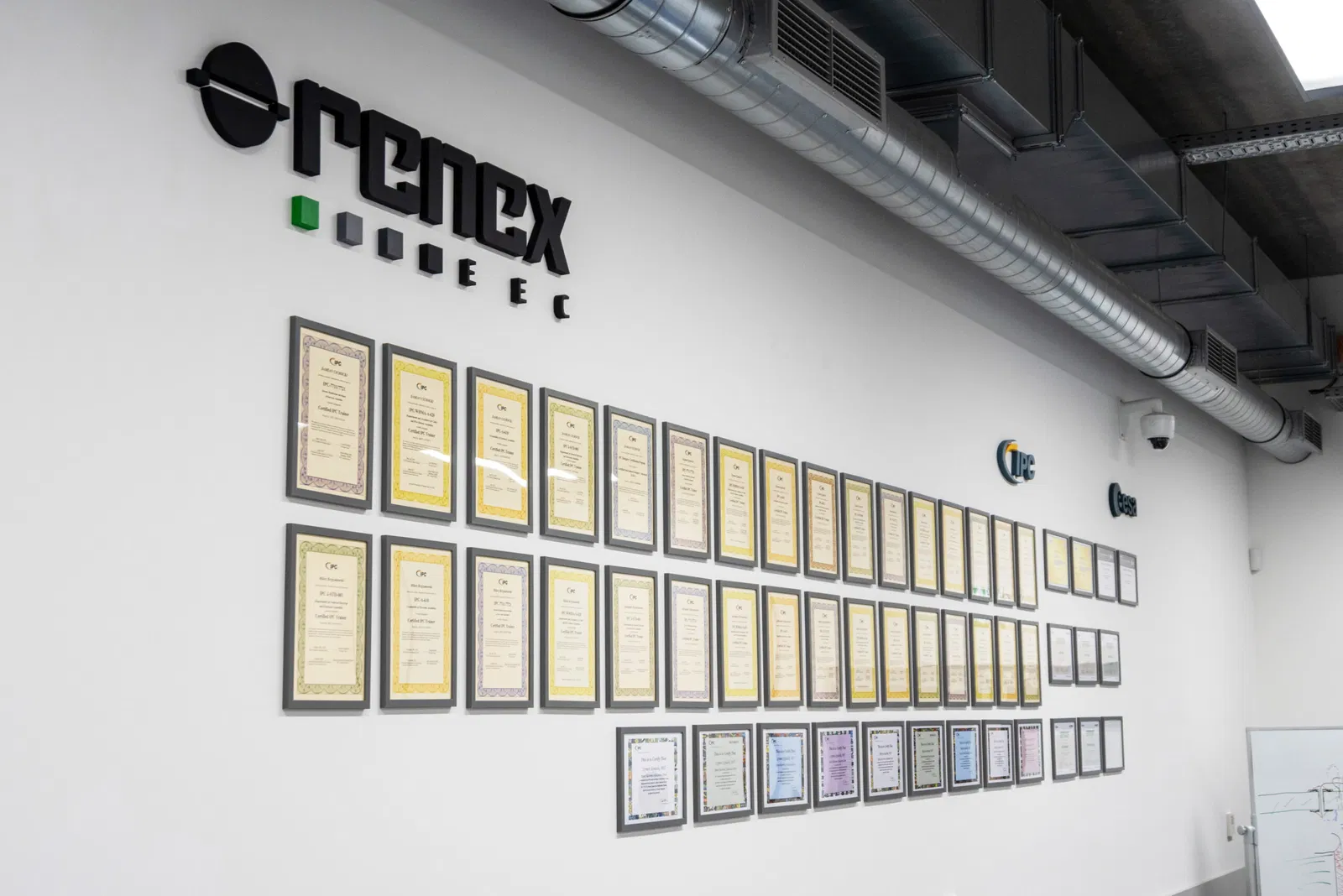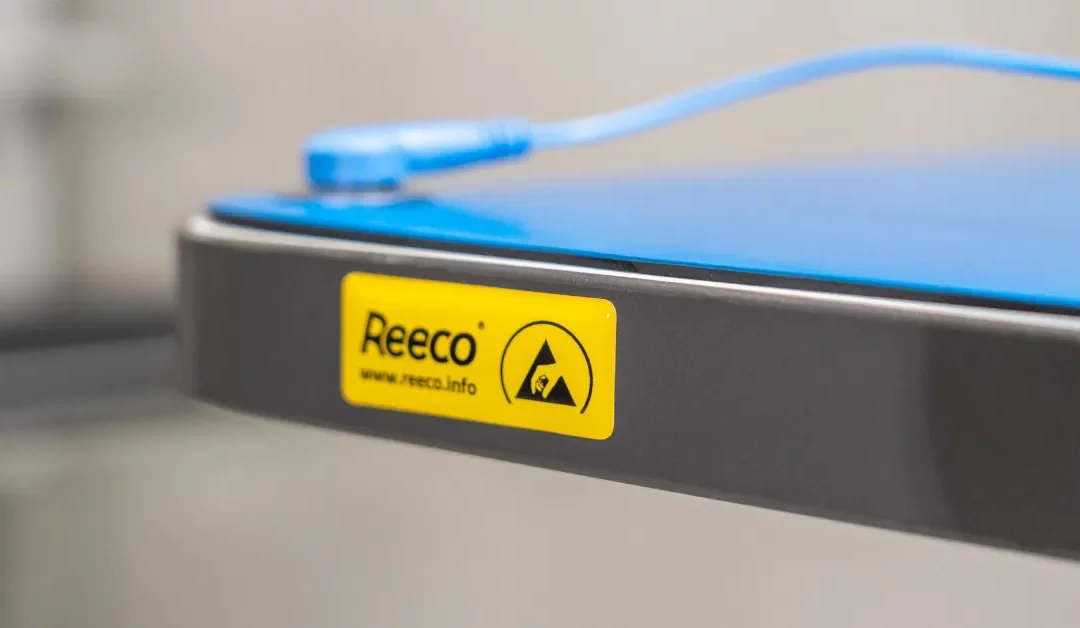Electrostatic discharge (ESD)-sensitive components are now standard in modern electronic devices. As the level of technological advancement increases, electronics manufacturers are increasingly facing challenges they hadn’t encountered before. Electrostatic discharges, although invisible to the naked eye, can cause damage with long-term consequences—especially since the effects are not always immediately apparent.
The nature of this phenomenon means that people working in production and service areas rarely receive a direct signal that something has gone wrong. In a typical learning-by-experience model, there is clear feedback: I make a mistake, I get immediate information, I learn from it. In the case of ESD, however, the effects appear over time—often only once the product reaches the customer and is returned as a complaint. What’s worse, it’s virtually impossible at that point to determine who and when failed to follow the proper procedures.
For this reason, the only effective protection strategy is the implementation of systemic solutions—ones that operate independently of the user’s attention or good intentions. This includes both proper equipment and procedures that are known and consistently followed by everyone involved in the process. While this may sound straightforward, in practice the execution of this approach often involves numerous technical and organizational challenges.
It’s worth noting that experience in electronics assembly doesn’t always translate into awareness of ESD-related risks. That’s why even companies that have been in the market for years may need support from external experts—especially when implementing new production lines or upgrading existing solutions.
One of the most experienced partners in this field is RENEX Group—a company that has been providing comprehensive support to the electronics industry in Poland and Central and Eastern Europe for over three decades. Through its RENEX TECHNOLOGY AND TRAINING CENTER, the company organizes training and implementation programs in areas such as ESD protection, production automation, workstation ergonomics, and the design and setup of EPA zones. At the same time, under the REECO brand, RENEX Group designs and manufactures specialized equipment: antistatic furniture, clothing, collaborative robots, and devices intended for working with electrostatic-sensitive components.
EPA zone – from concept to implementation
The foundation of any effective ESD protection system is the designation of a proper space—the so-called EPA zone. This is an area where all surfaces, devices, furniture, and tools meet specific electrostatic parameters. The key parameter is the surface resistance of materials, which, according to standards, should fall within the range of 10⁶ to 10⁹ Ω. This ensures that electrostatic charge can be discharged in a controlled manner, without sudden discharges.
In practice, this means that the entire production area where ESD-sensitive components are handled must be equipped with appropriate materials—from specialized flooring and worktops to shelving, containers, and even chairs. Each of these elements must not only avoid generating electrostatic charges but also allow for their safe dissipation or discharge to ground
However, implementing an EPA zone is not just about purchasing the right materials. To ensure the zone functions as intended, it requires a well-designed system based on an analysis of the company’s actual processes. This is where specialized consultants—such as the RENEX team—come in. They assist in planning, equipping, and launching an EPA zone in a way that aligns with the specific production profile.
Planning complexity – more than just workstation layout
At first glance, defining an EPA zone may seem like a matter of choosing its location and equipping it in accordance with applicable standards. However, the reality is more complex. Effective EPA planning requires taking into account a wide range of factors—both technical and organizational—that are easy to overlook during the design phase.
First and foremost, it’s essential to determine the number of workstations and the operators assigned to them. This information not only dictates the size of the EPA zone but also the amount of materials and equipment required to outfit it. However, in practice, less obvious aspects can prove equally important—such as the layout of other departments within the facility, the proximity of shared spaces, or how often unauthorized individuals pass near the EPA.
For example, if guests or employees from non-production departments walk through the workspace, there’s a risk they may enter the zone without proper ESD protection. This makes it necessary to design a proper system of signage, access restrictions, and physical barriers to minimize that risk. These solutions may range from simple warning tapes to more advanced options—like marked posts or modular barrier systems, such as those offered by the REECO brand.
Entry points also play a crucial role—their number, location, and method of access management. In larger facilities, it’s not uncommon to have multiple entrances to a single EPA zone, which requires standardized access procedures. In such cases, manual checks by a designated person are no longer sufficient—leading more companies to adopt access control gates.



Access control gates in the EPA zone
Automatic ESD gates are a prime example of a solution that significantly enhances EPA zone safety while relieving management staff from the need to constantly monitor entry points. These devices combine physical access control with real-time testing of antistatic protection measures—allowing entry only to individuals who are properly grounded and equipped with a functioning wrist strap and ESD shoes or heel straps.
The operating principle is simple: the user stands on a conductive plate while simultaneously touching a test point or tester that verifies compliance with ESD requirements. If the result is positive, the gate unlocks and grants access. If any element of the ESD protection is not functioning properly—such as a damaged wrist strap or shoes that fail to provide sufficient contact with the floor—access is denied, and the system alerts the user to take corrective action.
This type of control is crucial, as it helps eliminate risks caused by forgetfulness or oversight. With these gates in place, every entry into the EPA zone involves a mandatory, quick, and unambiguous verification of protective measures. This is especially important after breaks, when ESD protection may have shifted or become dirty.
Various types of gates are available on the market—turnstile, swing, or flap gates—that can be used either as standalone checkpoints or as part of a larger fencing system. Manufacturers like REECO offer semi-automatic gates integrated with testers, allowing ESD checks to be completed within seconds. Some systems can also be integrated with time tracking, access pass systems, or ESD audits—logging every entry, linking it to a specific employee, and storing the data for administrator review.
Such solutions not only enhance safety but also reduce human error, improve organizational discipline, and significantly simplify both internal and external audits.
Equipment – from workstations to transport systems
A properly designed and secured EPA zone is just the beginning. The next step is its comprehensive outfitting—taking into account both the workstations and the elements that support the entire production process. At this stage, ergonomics become especially important—a well-organized workspace not only improves operator comfort but also boosts efficiency and reduces the risk of errors.
The core elements, of course, are the workbenches—tailored to the type of tasks performed, fully compliant with ESD standards, and expandable as needed. A good example is the REECO Premium Electric table with electrically adjustable worktop height, which allows for an easy transition between sitting and standing positions without interrupting the workflow. This type of station is typically complemented by antistatic chairs, task lighting, monitor arms, tool holders, as well as fume extractors and absorbers.
Equally important are the elements that support the flow of components and finished products—shelves, carts, and transport containers. All of these must meet EPA requirements, meaning they must not generate electrostatic charges, and their surfaces must allow for charge dissipation. Containers used for storing PCB boards should be made from conductive materials, with smooth, easy-to-clean surfaces.
Clothing and accessories – small details that make a big difference
One often underestimated aspect of designing antistatic protection is the proper selection of workwear and accessories. Yet it is the employee—being a potential source of electrostatic charge—who poses the greatest risk in an EPA zone. That’s why it is essential for every operator to be equipped with a full set of appropriately selected personal protective equipment.
The foundation consists of ESD jackets and lab coats—made from antistatic materials that not only prevent charge generation but also safely dissipate any naturally occurring static built up from body movement. REECO clothing, designed specifically for work in EPA environments, comes in a wide variety of styles, colors, and sizes, allowing users to choose garments tailored to their individual needs—while maintaining high levels of comfort and aesthetics.
Completing the setup are ESD shoes and wrist straps—often underestimated, yet critically important. Footwear must meet ESD requirements while also offering durability, comfort, and safety for various working conditions. Wrist straps—either wired or wireless—should be regularly tested for functionality and condition. In this regard, both personal testers and the aforementioned access control gates prove useful.
It’s also important to consider ESD gloves, antistatic hair covers, and shoe covers—all of which, though seemingly minor, play a crucial role in the overall effectiveness of the protection system.
Training – the key to long-term system effectiveness
Neither the design nor the equipment of an EPA zone will be fully effective if employees do not understand why ESD protection is important and what the consequences are of failing to comply with it. That’s why every implementation should include a training program—covering both operational staff and those responsible for supervision, maintenance, and auditing of the system.
RENEX Group, through its RENEX EEC Center, offers training based on international IPC standards. The RTC-01 course—available in 8- or 16-hour formats—delivers not only theoretical knowledge but, most importantly, practical skills that help participants recognize risks, apply protective measures, and respond appropriately to potential issues. The classes are led by experienced instructors using modern technical facilities and real-world examples.
The extended version—dedicated to ESD coordinators and auditors—also covers topics such as documentation development, measurement procedures, preparation of reports in compliance with standards, and maintaining protection continuity under changing production demands.
Summary
Building an effective ESD protection system is not a one-time effort but a long-term process involving analysis, planning, implementation, and regular maintenance of standards. An EPA zone must function as an integral part of the production environment—connected with logistics, work organization, personnel management, and quality audits.
Modern solutions, such as access control gates, reporting systems, ergonomic equipment, and comprehensive training programs, not only enhance safety but also streamline daily operations, reduce errors, and foster a quality-oriented culture throughout the facility.
RENEX Group, by providing comprehensive support—from design through implementation to training—enables companies to achieve these goals effectively and in alignment with their specific needs. This approach pays off, both in the short and long term.

